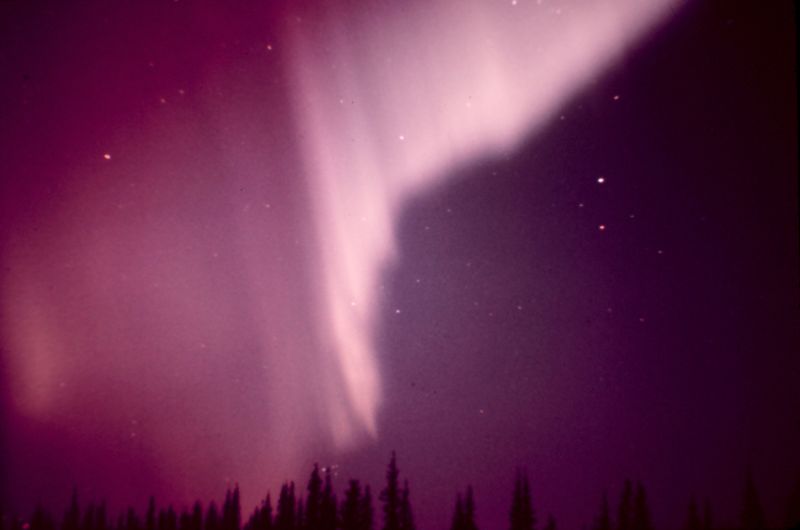Solar Flares And The Northern Lights
Interview with
Chris - Giulio is here also from the Mullard Space Since Laboratory. Hi Giulio, thank you for coming. Now you're not interested so much in Mars as the Sun. What are you doing with the Sun?
Giulio - Well I am interested in the Solar atmosphere. It's funny enough, I'm Italian, but I left Italy to study the sun here, so I left looking at the sun almost every day. The solar atmosphere in the last 10 years, since I've been here tends to SoHo so you can see all the atmosphere.
Chris - So using SoHo, what's the sort of mission aim? What are you trying to find out?
Giulio - Well basically we're trying to find out everything. The basics about the solar atmosphere. We still don't know the basics in terms of why it's so hot, the atmosphere. It's much hotter than the solar surface, we still don't know what the process is that accelerates the stream of particles that are coming out all the time from the sun and they reach the earth.
Chris - This is the solar wind? It's what a million mile an hour maelstrom of ionized material isn't it? It's a stream.
Giulio - Yes it goes streaming across and passing through the earth and throughout the whole solar system and creating all these wonderful displays of the auroras on the earth but also on all the planets.
Chris - So the northern lights and stuff is down to that?
Giulio - That's right, yes. The fast solar wind mostly. But then especially thanks to flares, when these big displays are happening, there's a link. For example when I was here I was able to predict a big explosion of the sun one day, and then it happened. And I was able to basically follow this huge energy release from the SoHo satellite. And we knew there were going to be huge Auroras, so it was very exciting one and a half days later.
Chris - Why do you actually get aurora borealis, the northern lights? What's actually happening to make them?
Giulio - Well what happens is there is this huge stream of particles that are coming together with huge masses of gas, about 10 thousand million tonnes or something like that, a huge amount of ionised gas that is streaming towards the earth. And then all these energetic particles they get trapped into the magnetosphere and then they follow basically the magnetic fields that we have on the earth. And so they stream down and they decelerate and interact with the upper atmosphere. They ionise our atmosphere, the oxygen and nitrogen atoms. And then they show the colours.
 Helen - I've never seen the northern lights and I was wondering why we only see them at the north or south poles?
Helen - I've never seen the northern lights and I was wondering why we only see them at the north or south poles?
Giulio - It's because normally when the sun is quite normally active, that's where they are. You have these ovals which are very close to the North and South poles.
Chris - Just because that's where the magnetic field is dipping into the poles?
Giulio - Yes, that's right. When you have a flare, all that gets disrupted so you can get them to lower latitudes. You can see them even almost towards the equator in certain circumstances. I saw them even in Cambridge just because there was this flare that had this coronal mass ejection directed towards us. That was very nice. So they're easy to see actually, if you know when to see them and you have the right kind of combination.
Chris - I suppose one benefit of studying the behaviour of the sun is that it will enable you to know when communications on earth might be likely to be affected. Is that because satellites that we're using for our communications are also being bombarded by this radiation and this can cause problems?
Giulio - Yes, indeed. That has caused problems. To start with you have these energetic particles that come after just a few hours. You have first the light that comes in 8 minutes, and you have all these X-rays and you have all this very dangerous stuff, especially for humans in space who can get basically fried. But then you have after a few hours these very energetic particles, which can swamp all the detectors and cause damage. Plus you have after one day or something, you have these bubbles of gas passing at high speeds. And they've been known to cause trouble for even shut down satellites. The last one was in 1997, in the past there have been a lot of cases of this, they can shut down satellites and cause trouble. And of course the other problem is that all these X-rays they deform our ionosphere. They deregulate all of our upper atmosphere so when they happen basically they can affect all the transmissions, their upper frequencies, they can change a lot of things.
- Previous Mars in 3d
- Next Ripples in Andromeda










Comments
Add a comment